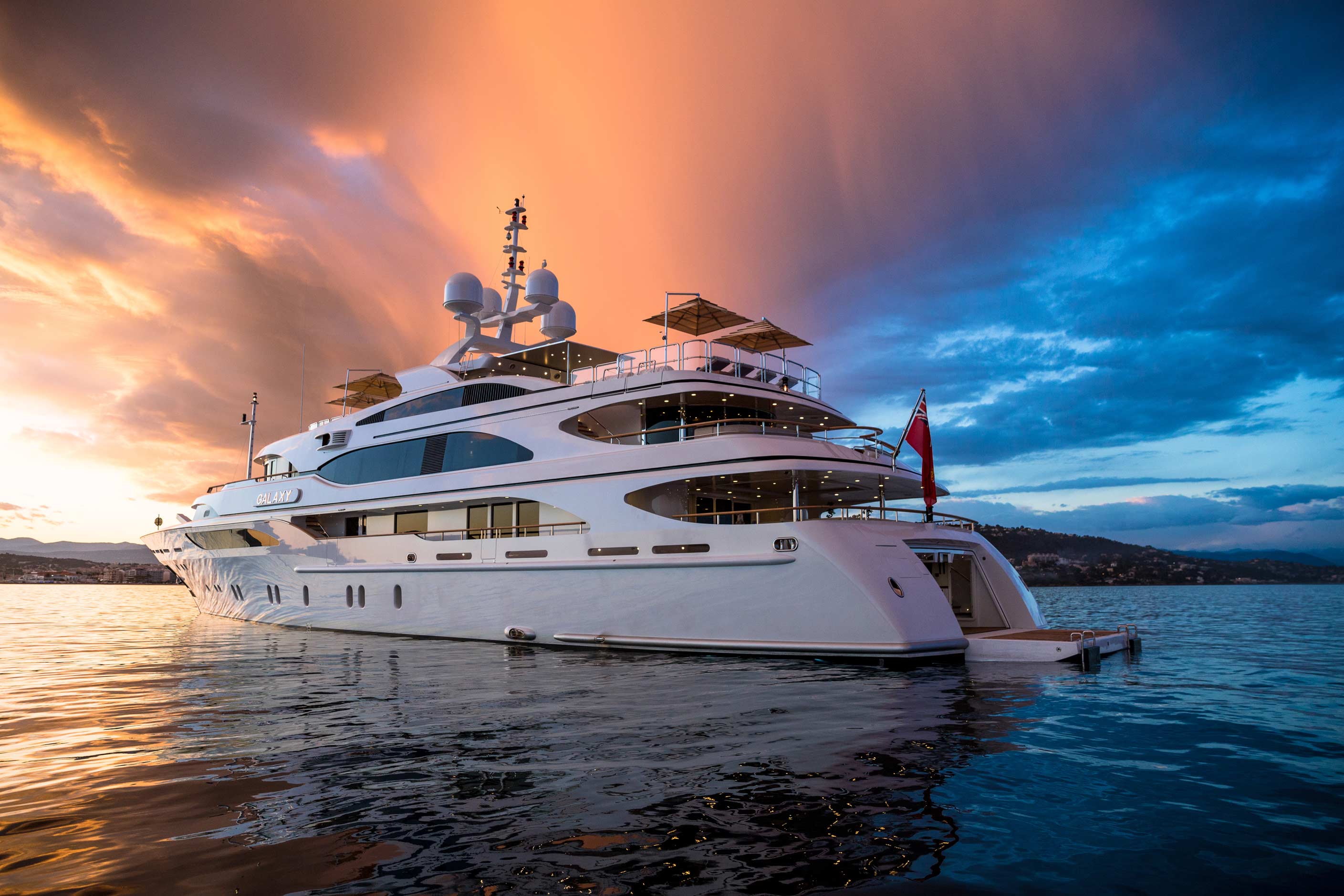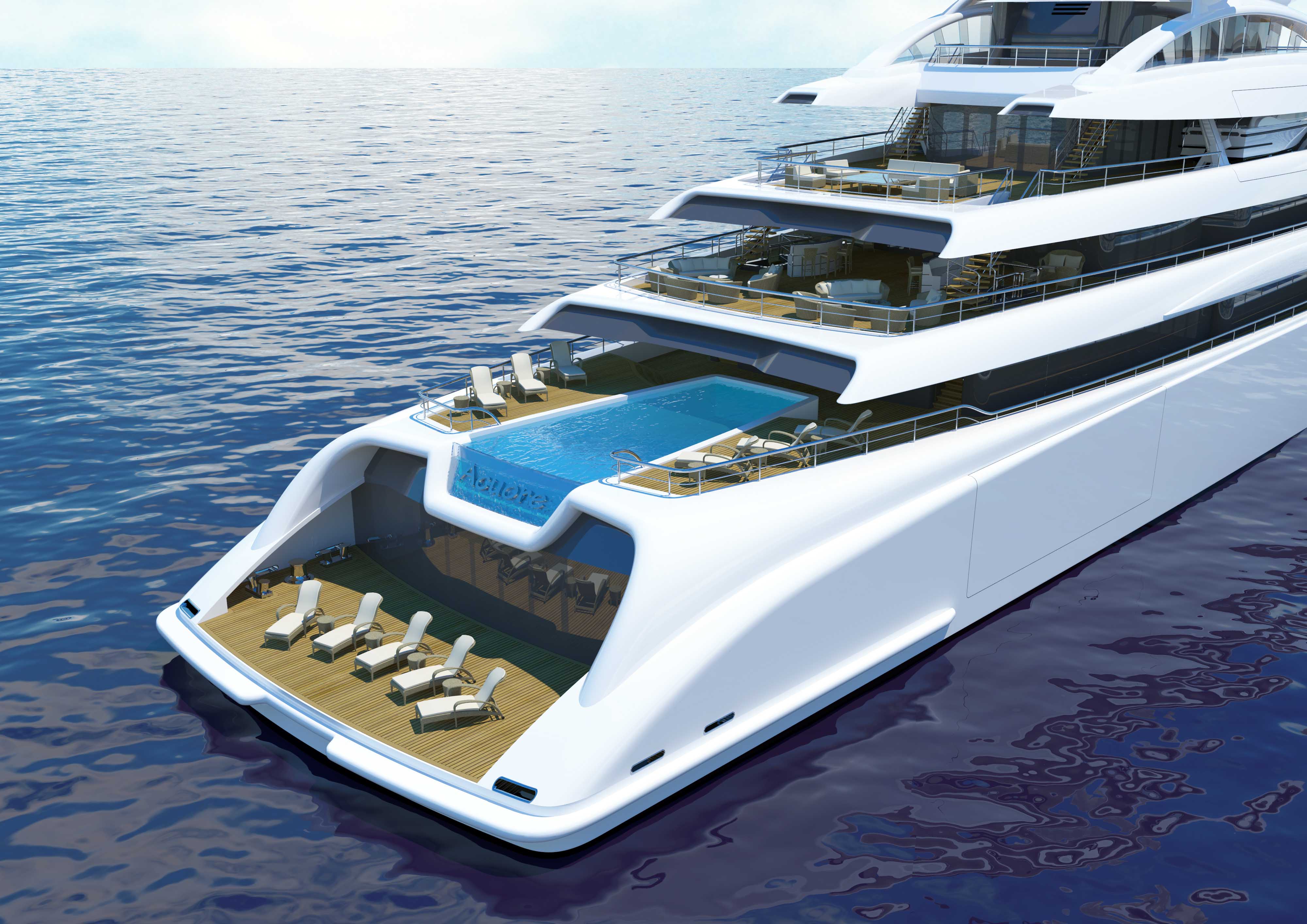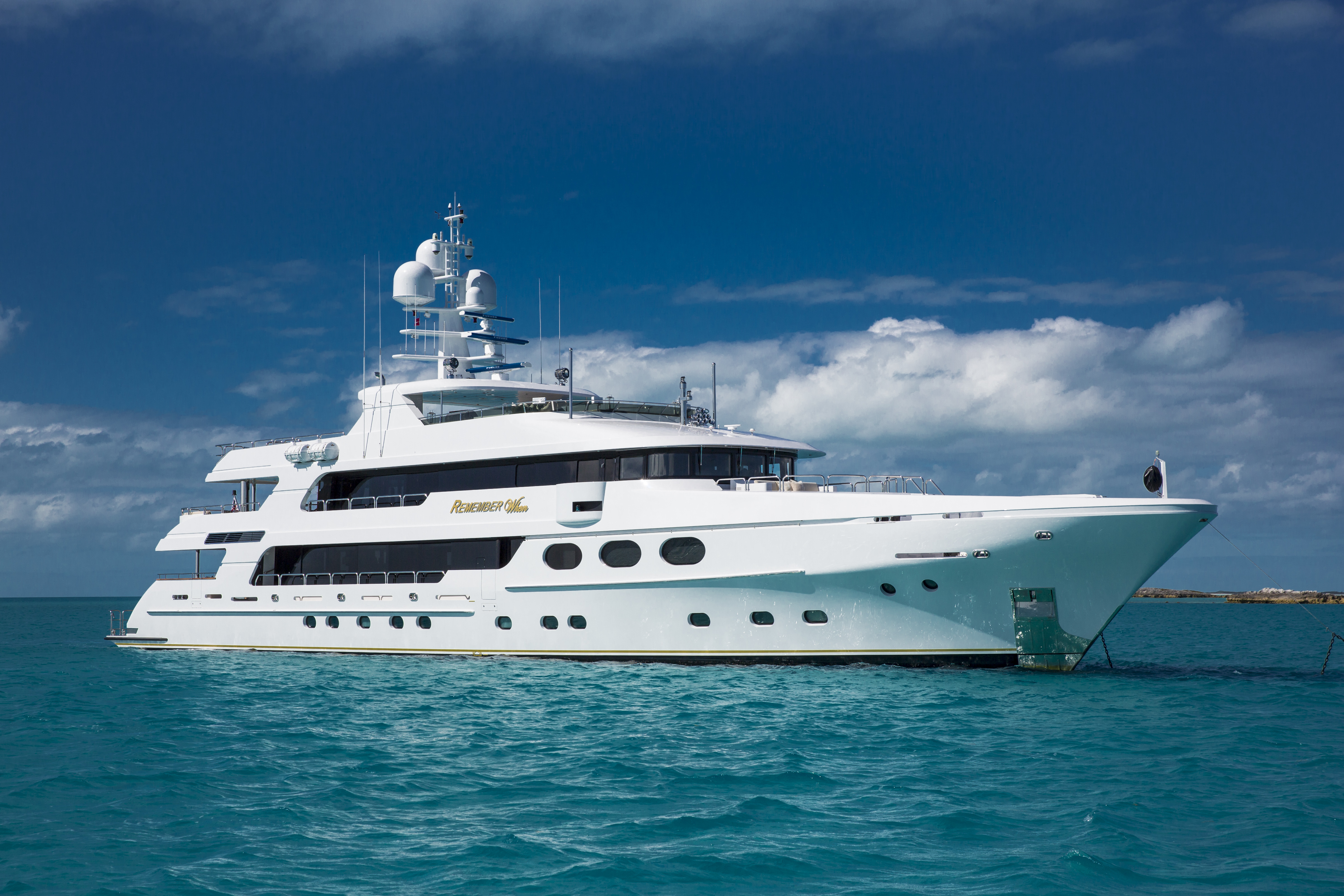Sicily Yacht Tragedy: Unraveling The Mystery Of The Sinking Superyacht
The tranquil waters off the coast of Sicily, typically a haven for luxury and leisure, became the scene of a shocking maritime disaster when a superyacht, the "Bayesian," succumbed to a violent storm and sank. This tragic event, which resulted in the loss of seven lives, has sent ripples through the global yachting community, prompting urgent questions about the resilience of even the most opulent vessels when confronted by nature's raw power. The incident highlights the inherent risks of sea travel, even for those aboard meticulously engineered luxury yachts, and underscores the critical importance of maritime safety protocols and emergency preparedness.
While the immediate cause was attributed to an intense storm, the swiftness with which the "Bayesian" vanished beneath the waves has left investigators and experts puzzled. Luxury yachts are, by design, built to withstand significant weather events. This article delves into the details of the "yacht sinks Sicily" tragedy, exploring the known facts, the harrowing rescue efforts, and the lingering questions that demand answers, all while emphasizing the vital lessons for safety and accountability in the high-stakes world of superyacht operations.
Table of Contents
- The Shocking Incident: What Happened Off Sicily
- The "Bayesian" Superyacht: A Vessel Built for the Seas
- The Violent Storm: Nature's Fury Off the Sicilian Coast
- Rescue Efforts and Grim Discoveries
- Unanswered Questions: Why Did the "Bayesian" Sink So Quickly?
- Maritime Safety and Superyacht Standards
- Lessons from the Sicily Yacht Tragedy
- The Human Cost: Remembering the Victims
The Shocking Incident: What Happened Off Sicily
The morning of the tragedy, a Monday, began with an ominous turn as a violent storm, later described as a tornado, swept across the waters near Sicily. A luxury superyacht, the "Bayesian," flying a British flag, found itself caught in the tempest. With 22 people on board, the vessel was battered mercilessly by the storm. Newly released video footage, grainy but harrowing, captured the final moments of the superyacht as it struggled against the elements before suddenly succumbing to the powerful forces and sinking off Sicily. The incident was swift and devastating, leaving little time for those aboard to react.
The initial reports indicated a dire situation: a luxury yacht hit by a tornado and sinking, with one person confirmed dead and six others missing. The scale of the disaster quickly became apparent as rescue operations commenced. The fact that such a substantial vessel could be overwhelmed so rapidly by a storm, even a violent one, immediately raised red flags and sparked intense scrutiny within the maritime industry. The shocking nature of the "yacht sinks Sicily" event underscored the unpredictable and unforgiving power of the sea, even in an era of advanced marine engineering.
The "Bayesian" Superyacht: A Vessel Built for the Seas
Superyachts like the "Bayesian" are not merely large boats; they are sophisticated marvels of engineering, design, and luxury. Constructed to the highest standards, they are typically equipped with advanced navigation systems, robust hulls, and powerful engines designed to ensure safety and comfort even in challenging sea conditions. The expectation is that such vessels are built to weather significant events, providing a secure environment for their passengers and crew. This inherent strength and the considerable investment they represent make the sinking of the "Bayesian" all the more perplexing.
The construction of a superyacht involves meticulous planning and the use of high-grade materials, often including advanced composites and marine-grade aluminum or steel. Design principles prioritize stability, seaworthiness, and structural integrity. For instance, some construction methods involve multiple layers of material, often epoxy-glued together and the hull sheathed, to create an incredibly strong and watertight structure. These vessels undergo rigorous testing and classification by international maritime organizations to ensure they meet stringent safety regulations. Therefore, the question that immediately arose was: if luxury yachts are built to weather such events, why did this boat sink off the coast of Sicily?
The Violent Storm: Nature's Fury Off the Sicilian Coast
The "Data Kalimat" explicitly states that there was a "violent storm" and that the yacht was "hit by a tornado." This distinction is crucial. While luxury yachts are designed to handle rough seas and strong winds, a direct hit from a tornado, a localized and extremely powerful rotating column of air, presents a unique and far more severe challenge. Tornadoes at sea, often called waterspouts, can generate winds exceeding 100 knots (185 km/h) and create highly turbulent conditions over a very concentrated area. The sudden and intense force of a tornado can exert immense pressure on a vessel's structure, potentially leading to catastrophic failure.
The impact of such a localized, violent weather phenomenon can be devastating. Unlike a widespread gale, which a well-found yacht can ride out by adjusting course and speed, a tornado delivers a concentrated, destructive punch. The force exerted on the mast, rigging, and hull can be immense, potentially exceeding the design limits of even the most robust structures. The "Bayesian" was caught in this direct path, and the sheer power of the storm played a critical role in its rapid demise. Understanding the precise nature and intensity of this localized storm event is paramount to unraveling the full sequence of events that led to the "yacht sinks Sicily" disaster.
Rescue Efforts and Grim Discoveries
The Initial Response
As news of the sinking spread, a massive search and rescue operation was immediately launched by Italian authorities. Rescuers were on Monday searching for the missing after the luxury yacht sank. Of the 22 persons on board, 15 were safely evacuated, a testament to the swift actions of the crew and the responding emergency services. The focus quickly shifted to locating the remaining individuals who were unaccounted for.
The challenging sea conditions, still turbulent from the storm, complicated the initial rescue efforts. However, the dedication of the Italian Coast Guard, firefighters, and other emergency personnel was unwavering. The immediate priority was to save lives, and every available resource was deployed to the scene of the shipwreck off Porticello, Sicily, southern Italy.
The Search for the Missing
Despite the prompt response, the grim reality of the situation soon became apparent. The search was called off at around 8 pm in Sicily on the day of the sinking, with divers expected to begin operations the following day. Italian firefighter divers quickly commenced their work at the site of the shipwreck. Divers searching the wreck of the superyacht "Bayesian" that sank off Sicily on Monday recovered a fifth body on Thursday and continued to search for one more. Eventually, the search and rescue mission later recovered the bodies of seven people, confirming the tragic loss of life. Divers managed to retrieve four other bodies from the "Bayesian" in the days following the incident, bringing the total number of recovered bodies to seven, accounting for all missing individuals.
The recovery efforts were arduous, requiring specialized equipment and highly trained divers to navigate the treacherous underwater environment of the sunken yacht. Each discovery was a somber reminder of the human cost of the disaster, solidifying the "yacht sinks Sicily" event as one of the most tragic maritime incidents in recent memory.
Unanswered Questions: Why Did the "Bayesian" Sink So Quickly?
The core mystery surrounding the "Bayesian" sinking is not just that it sank, but *how quickly* it sank. As noted, luxury yachts are built to withstand violent storms. This fact has led investigators to seek a deeper understanding of the vessel's rapid demise. The immediate aftermath of the tragedy saw investigators scrambling to learn why the vessel sank so quickly, especially given its robust construction. The "five things we learned from Sicily yacht press conference" likely touched upon initial findings, though specific details from that conference are not provided in the data.
The Role of Mast Failure
One critical piece of information that emerged from the investigation is that the "aluminium mast to break in half and the ship to lose its balance and sink." This detail is incredibly significant. The mast on a superyacht, especially a sailing yacht, is a massive structural component. Its failure, particularly breaking in half, would have immediate and catastrophic consequences. Such a failure would not only compromise the yacht's stability but could also create a large opening in the hull if it fell onto the deck or through it, leading to rapid water ingress. The sudden shift in weight and balance would severely impair the vessel's ability to remain afloat, even if the hull itself was initially intact.
The breaking of the mast suggests an extreme force was applied, likely by the tornado, exceeding the material's yield strength. Investigators would be examining the mast's design, material quality, maintenance history, and the specific forces it was subjected to at the moment of impact. This particular point of failure is a key focus in understanding the rapid sinking of the "Bayesian" off Sicily.
Investigating the Structural Integrity
Beyond the mast, investigators would also be scrutinizing the overall structural integrity of the "Bayesian." This includes examining the hull for any breaches or weaknesses that might have exacerbated the sinking once the mast failed. They would consider whether any pre-existing damage, material fatigue, or design flaws could have contributed to the rapid loss of buoyancy. The fact that the vessel sank so quickly suggests a massive and rapid ingress of water, which could be due to a significant breach or a cascading failure of watertight compartments.
The investigation would involve detailed analysis of the wreckage, if recoverable, and a review of the yacht's blueprints, maintenance logs, and classification society records. Understanding the precise sequence of events – from the tornado's impact to the mast failure, and then to the ship losing balance and sinking – is crucial for preventing similar tragedies in the future. The inquiry into why this luxury yacht sank off Sicily is not just about assigning blame, but about enhancing maritime safety standards for all vessels.
Maritime Safety and Superyacht Standards
The "yacht sinks Sicily" incident serves as a stark reminder that even the most advanced and luxurious vessels are not immune to the forces of nature. It brings into sharp focus the rigorous standards and continuous vigilance required in maritime operations. Superyachts are typically built to adhere to the rules of classification societies (e.g., Lloyd's Register, DNV, ABS), which set stringent requirements for design, construction, and ongoing surveys. These rules cover everything from hull strength and stability to fire safety, watertight integrity, and emergency systems.
However, even with the highest standards, the unpredictable nature of extreme weather events like tornadoes can test the limits of engineering. Maritime safety also encompasses robust weather forecasting and decision-making by the captain and crew. The ability to interpret weather data, make timely decisions to alter course, seek shelter, or prepare the vessel for severe conditions is paramount. Furthermore, regular maintenance, crew training in emergency procedures, and the availability of adequate safety equipment (like life rafts and personal flotation devices) are non-negotiable components of safe yacht operation. The tragedy off Sicily will undoubtedly lead to a re-evaluation of how superyachts are prepared for and respond to such rare but devastating weather phenomena.
Lessons from the Sicily Yacht Tragedy
Every maritime disaster, no matter how unique its circumstances, offers invaluable lessons that can lead to improvements in safety and operational protocols. The sinking of the "Bayesian" off Sicily is no exception. The primary lesson is the enduring power of nature and the need for constant respect for the sea. Even with advanced technology, human judgment and preparedness remain critical.
Potential areas for learning and improvement include:
- Enhanced Weather Intelligence: The need for even more precise and real-time localized weather forecasting, especially for phenomena like waterspouts and microbursts, in popular yachting areas.
- Structural Resilience: A re-evaluation of mast design and attachment points, particularly for large sailing superyachts, to withstand extreme, sudden forces.
- Emergency Procedures: Reviewing and refining rapid response protocols for catastrophic structural failures and swift sinking scenarios.
- Crew Training: Ensuring all crew members, not just the captain, are highly proficient in emergency drills, evacuation procedures, and damage control.
- Passenger Safety Briefings: Emphasizing the importance of clear and comprehensive safety briefings for all onboard, ensuring everyone knows what to do in an emergency.
The findings from the ongoing investigation into the "Bayesian" tragedy will be crucial for informing these potential changes, ensuring that the lessons learned from this devastating event contribute to a safer future for luxury yachting.
The Human Cost: Remembering the Victims
While the technical aspects of the "yacht sinks Sicily" incident are important for future prevention, it is vital not to lose sight of the profound human tragedy at its heart. Seven lives were lost when the "Bayesian" went down. These were individuals with families, friends, and futures, whose lives were cut short by the unforgiving sea. The 15 survivors, while fortunate, will carry the indelible memories of the terrifying ordeal and the loss of their fellow passengers and crew.
The impact of such an event extends far beyond the immediate victims and their families. It affects the rescue workers who risked their lives, the investigators piecing together the puzzle, and the wider maritime community that grapples with the implications. The memory of those lost serves as a poignant reminder of the inherent risks of maritime travel and the solemn responsibility that comes with operating vessels at sea. As the investigation continues, the focus remains on understanding what happened to prevent such a devastating loss of life from occurring again.
The sinking of the "Bayesian" off Sicily stands as a somber chapter in maritime history. It underscores that even in an age of advanced technology and luxury, the ocean demands respect, and vigilance must be constant. The ongoing investigation into why this superyacht sank so quickly will hopefully provide the answers needed to enhance safety protocols and prevent future tragedies. By learning from this incident, the yachting industry can strive to ensure that the pursuit of luxury and adventure at sea remains as safe as possible for everyone aboard.
What are your thoughts on this tragic incident? Do you believe current superyacht safety standards are sufficient for extreme weather events? Share your insights in the comments below, and consider exploring other articles on maritime safety and yachting on our site.

Luxury motor yacht Galaxy - Photo by Jeff Brown — Yacht Charter

Top 10 Best Aft Decks on Luxury Yachts — Yacht Charter & Superyacht News

Luxury Charter Yacht REMEMBER WHEN — Yacht Charter & Superyacht News